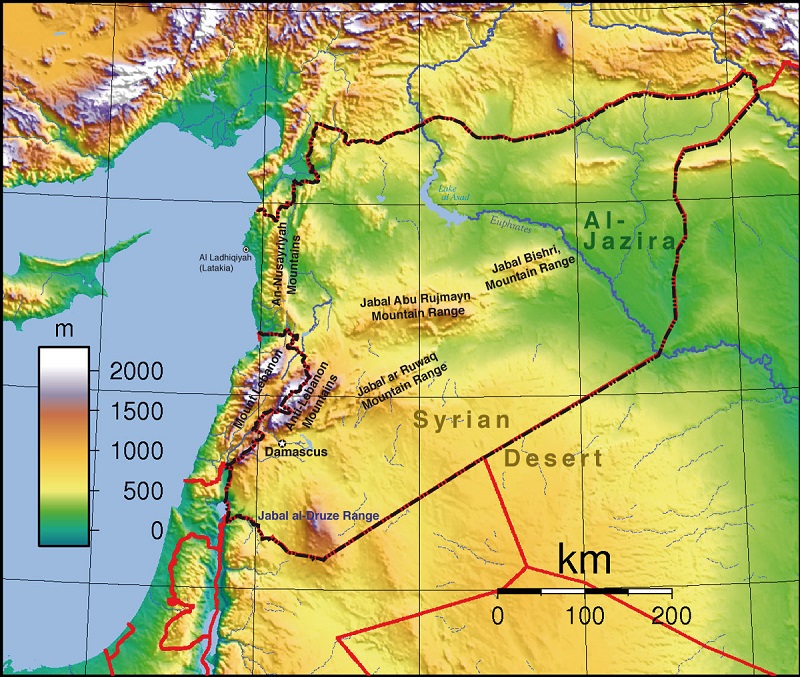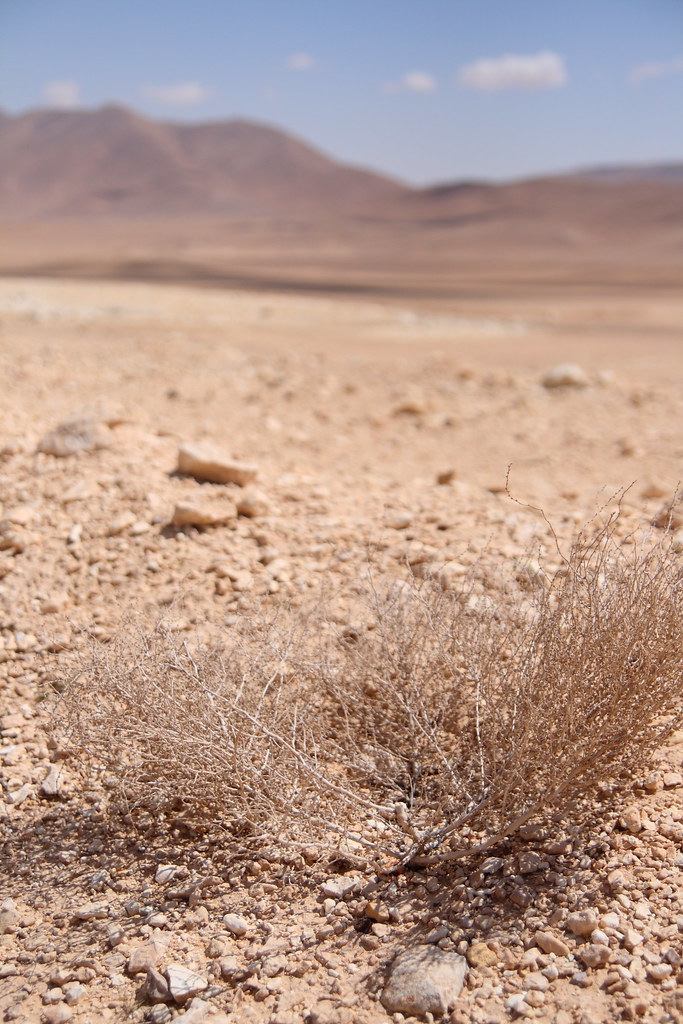Syrian Desert - Badia (BAD-YEAH)
The Syrian Desert is a region of desert, semi-desert, and steppe that expands over 200,000 square miles (500,000 sq KM) in the middle east, covering much of modern Syria, N. Iraq, Jordan, and N. Saudi Arabia. Notorious for the nomadic Bedouin tribes that inhabit the harsh landscape, there are several oasis that serve as settlements for their massive tents. The desert is bounded by the Orontes Valley and the volcanic field of Harrat al-Shamah to the west, and by the Euphrates to the east. In the north, the desert gives way to the more fertile areas and to the south it runs into the deserts of the Arabian Peninsula. The 700-900m high region in the middle of the desert is the Hamad Plateau, a rather flat, stony semi-desert consisting of limestone bedrock covered with gravel. What little rain arrives on the plateau flows into local salt flats.
One of the most important ancient settlements in the Syrian desert is Palmyra; first mentioned in the second millennium BC, the city was an important trading center in Roman times, and its people were renowned merchants who took advantage of its strategic position on the silk road linking the far east to the Mediterranean, by taxing passing by caravans, establishing colonies on the silk road, and trading in the rare commodities from the far east, thus bringing enormous wealth to their city. It is here that Syres finds himself returning to familiar grounds.
Having traversed this desert with the Arabian cavalry only a few decades after he was turned immortal, he returns during the First Crusade (1095-1099), when he travels east to India (1144-1160), the Third Crusade (1189 - 1192), and the Sixth Crusade (1228-1239) leading to the fall of the Crusader states. It is an inhospitable place, traversed only by experienced Bedouins, who know where the natural springs and oasis are. It is in large camps and in cities like Damascus, on the edge of the desert and Jordanian Mountains in the west where the riches of the silk road come together. It is in the oasis of the desert that Syres spends a couple years after the Sixth Crusade. He has become hopeless, fearing he'll never find mortality and spends his time doing simple tasks and protection work for a caravan of traders and herdsmen.












Comments